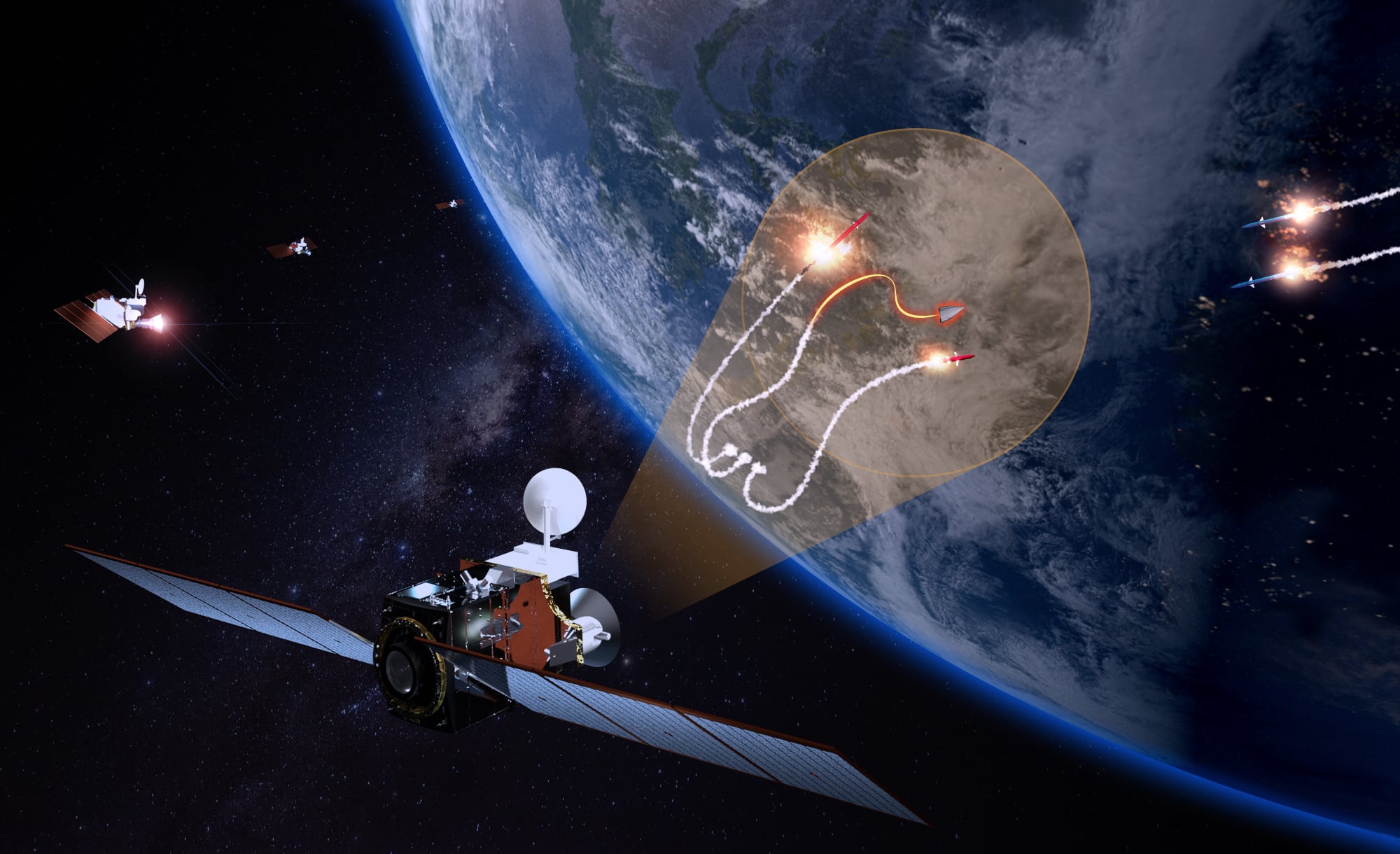WASHINGTON — The Space Development Agency plans to solicit proposals for its next round of tracking satellites in the coming weeks — an accelerated schedule enabled by major funding increase included in the defense spending bill.
The $550 million SDA increase included in the fiscal 2022 appropriations bill — which the president is expected to sign into law Tuesday before the current stopgap funding terms expire — will allow the agency to accelerate its plans to launch 28 missile warning satellites to low Earth orbit from 2026 to early 2025, according to a senior defense official who spoke to reporters Tuesday on background.
The increase — along with another $50 million added for various demonstration efforts — grows SDA’s total development and prototyping funding for fiscal 2022 from $636 million to $1.2 billion. The official stressed that SDA did not ask for the funding boost, but claimed it as “clearly an endorsement of what we’ve been up to.”
The satellites, which will carry overhead persistent infrared sensors for missile tracking, are part of SDA’s Tranche 1 Tracking Layer — a key component of the agency’s National Space Defense Architecture that is ultimately planned to consist of hundreds of satellites operating primarily in LEO. The first batch of eight tracking satellites, referred to as Tranche 0, are slated for launch in 2023.
“We’re really excited to push forward and make sure that we get all of our Tranche 0 and Tranche 1 constellations delivered on time and on budget,” the official said.
The official noted that even with the increase, fiscal 2022 funding represents just a portion of the Tranche 1 Tracking Layer budget and does not pay for all 28 satellites. SDA estimates the Tranche 1 Tracking Layer will cost about $2.5 billion to develop and launch, the official said.
While the additional funding will have a schedule impact, the official said an earlier version of the appropriations legislation recommended a $750 million boost, which would have allowed SDA to launch the Tranche 1 tracking satellites in late 2024.
Soon after the release of the tracking solicitation, SDA plans to issue a draft solicitation for Tranche 1 prototype satellites, part of a separate effort to experiment with new capabilities. The plan had been to request bids for those prototypes early this year, but since the funding release accelerated the Tranche 1 tracking schedule, the agency opted to move more slowly on the demonstration effort.
“We are very concerned with the bandwidth of our industrial performer base as well as our internal SDA bandwidth, so we’re not going to release both of those solicitations at the same time,” SDA Director Derek Tournear said earlier this month.
The official told reporters Tuesday that SDA is closely monitoring the supply chain for its satellites, noting that parts shortages — especially electronics — continue to be a concern for the agency. In fact, the agency had previously made schedule changes to allow contractors to request long-lead items earlier in order to mitigate supply issues.
“Those are still items that our primes are working pretty closely with their subcontractors to make sure they can mitigate,” the official said. “They all have closure plans on how to get there, but those parts are not sitting on the shelf ready to go right now.”
Meanwhile, the program is making progress on its Tranche 0 Tracking Layer effort, with L3Harris and SpaceX each building four wide-field-of-view satellites. SDA awarded the contracts in 2020 — L3Harris received $193 million and SpaceX $149 million — and both companies have completed critical design reviews.
SDA is also working in concert with the Missile Defense Agency as it oversees the development of medium-field-of-view satellites through its Hypersonic and Ballistic Tracking Space Sensor program. MDA in 2021 awarded Northrop Grumman a $155 million contract and L3Harris a $122 million contract for those satellites.
Courtney Albon is C4ISRNET’s space and emerging technology reporter. She has covered the U.S. military since 2012, with a focus on the Air Force and Space Force. She has reported on some of the Defense Department’s most significant acquisition, budget and policy challenges.








